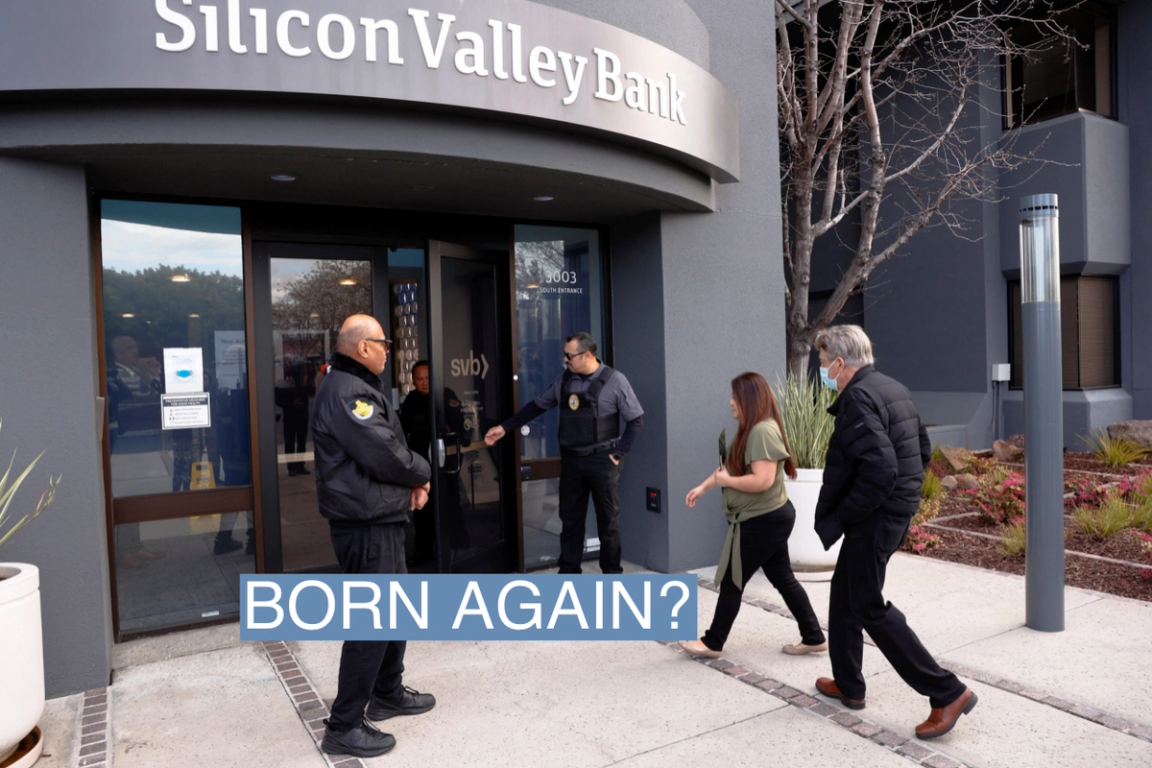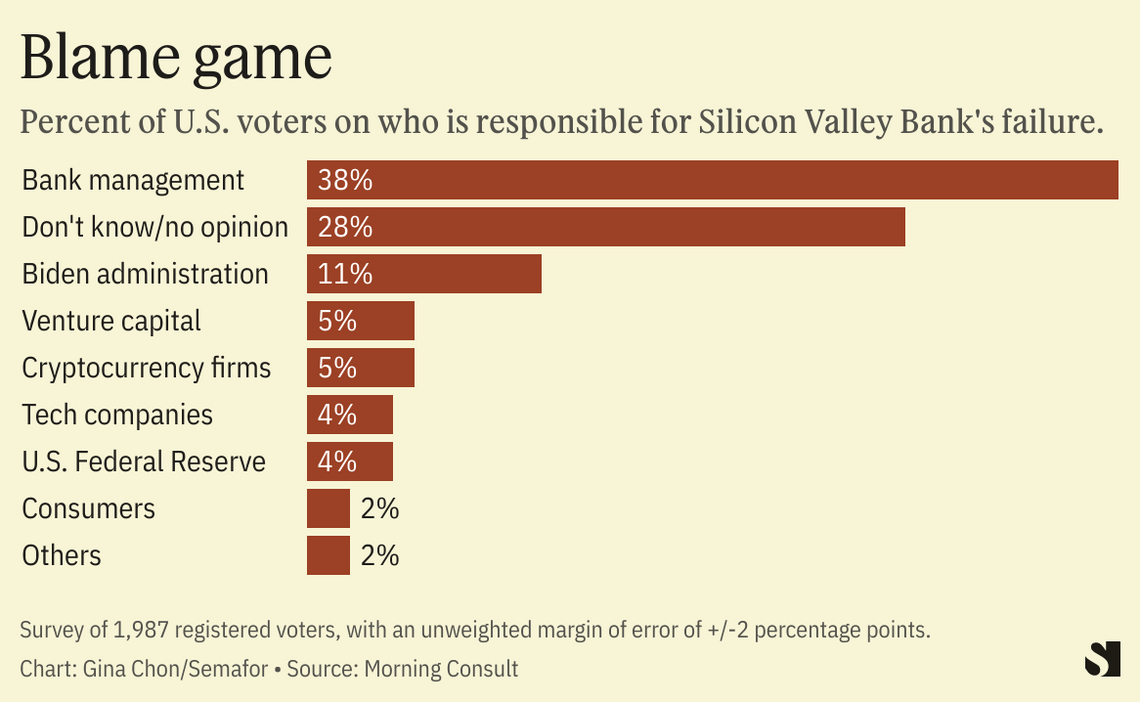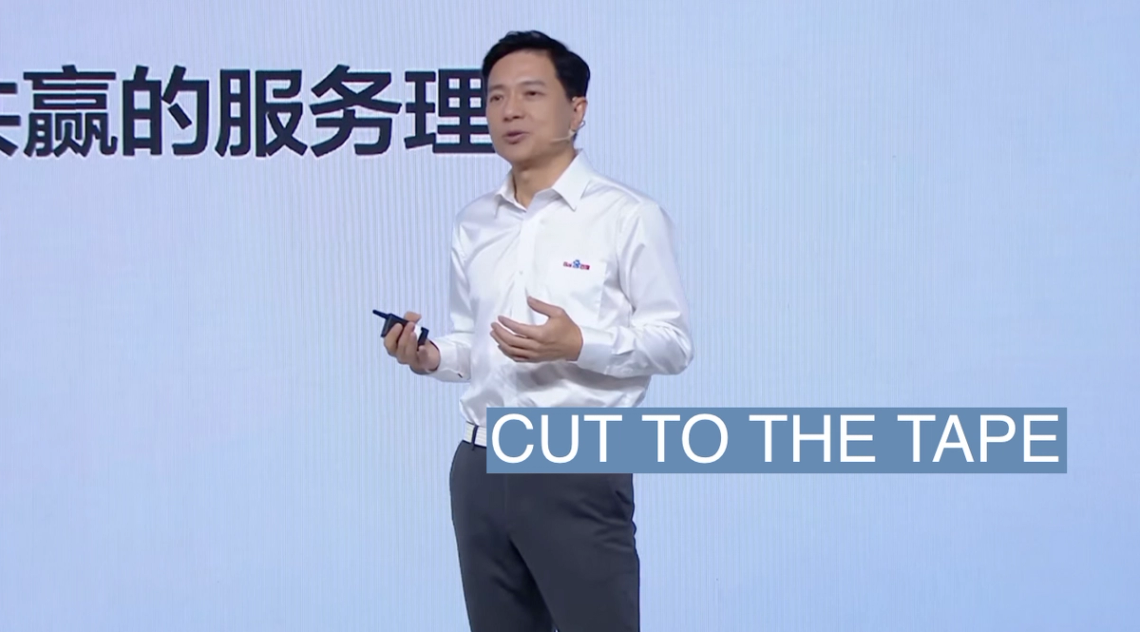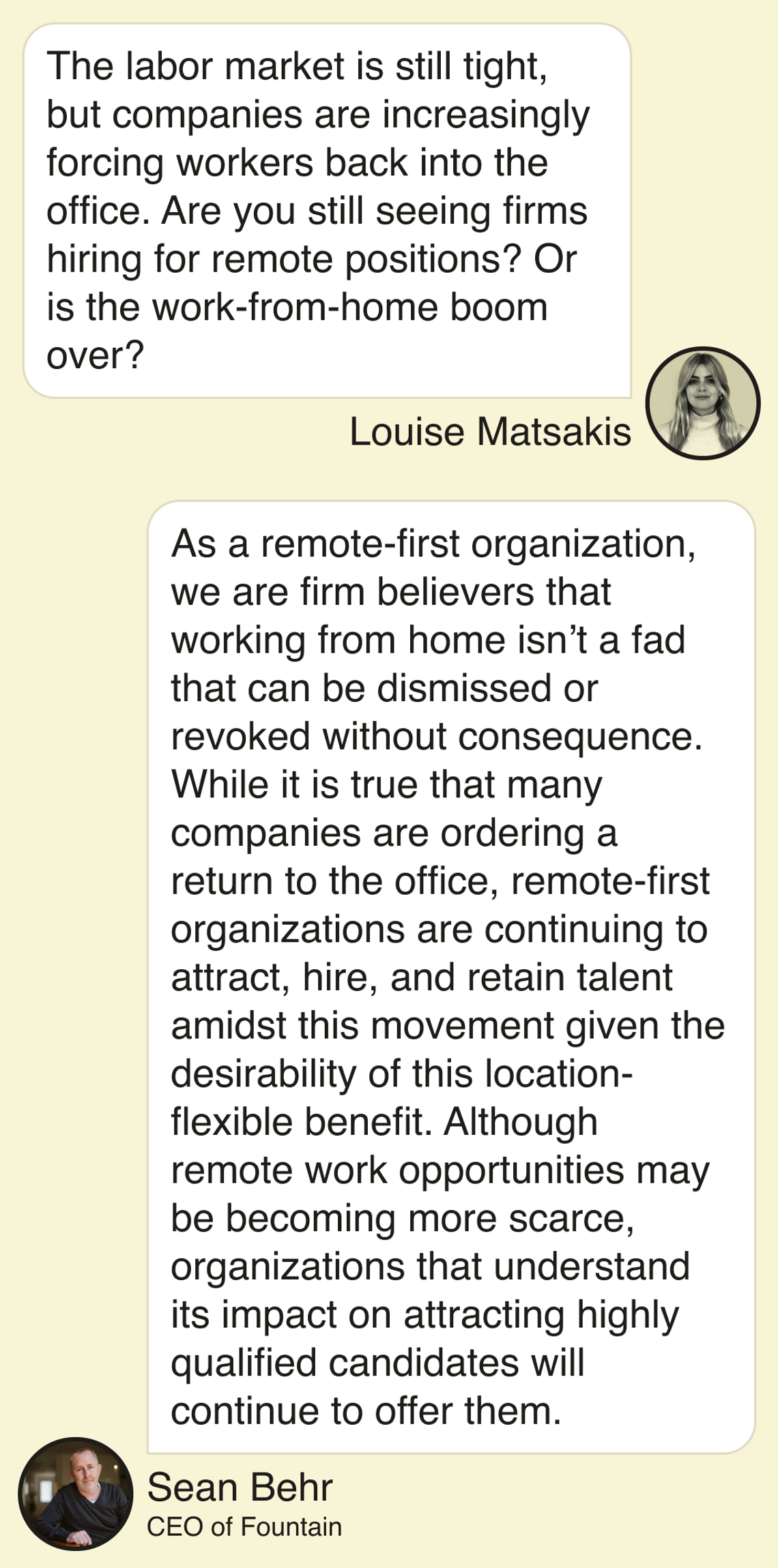THE SCENE  Reuters/Brittany Hosea-Small Reuters/Brittany Hosea-SmallSince the collapse of Silicon Valley Bank a week ago, hope is starting to emerge in the tech industry that some version of it may survive, even under new ownership. On LinkedIn, employees at SVB posted optimistic attestations that the bank is still operating, more or less the same way it was before, under its new structure. The rosy outlook that it may live on could be unrealistic given the bank’s reputational hit but it shows how much the lender became ingrained in the industry. The Federal Deposit Insurance Corp. took over the bank last week and is in the process of trying to sell it. Initially, the agency asked SVB staff to stay on for 45 days, receiving 1.5 times their salary, to help continue operations as the lender is sold. Now employees are hoping that the new entity, Silicon Valley Bridge Bank, could eventually survive as a reincarnated version of the original bank, with many of the same people continuing their relationships with venture capitalists and entrepreneurs. “VCs are beginning to recognize this value and conversations are shifting to focus on preservation of an ecosystem and how we can realistically come together as a community to make that happen,” wrote Jennifer Morton, a vice president at the bank. Adam Millsom, a marketing manager at the firm wrote: “There are 7k+ folks like myself, whose equity/retention has been wiped out, that are still working their asses off. The tech ecosystem is better with our Team of bankers at SVB intact and that’s what we are trying to do right now. If you agree, we do need your help. This is not an obit, this is a call to action:” Responses to the posts include some supportive messages from clients. “An innovation ecosystem without SVBB is unimaginable,” wrote Ram Reddy, CEO of a market research firm in San Jose. Adam Struck, founder and managing director of Struck Capital, said Friday that he had opened new accounts at other institutions after SVB collapsed, but that he has decided to keep funds at Silicon Valley Bridge Bank. “We feel safe right now and want SVBB to find its footing,” he said. On Thursday, financial tech startup Brex announced it was moving $200 million of its own corporate funds from big banks to an SVB bridge bank, which was created by the Federal Deposit Insurance Corp. to continue operations as regulators oversee its sale. “Silicon Valley Bank understands the unique needs and nuances of the startup community and has played an important role in driving innovation for the last 40 years,” said Brex co-founder and co-CEO Henrique Dubugras in a statement. “With the unlimited FDIC insurance backstop and the criticality of the Bank to the technology ecosystem, we believe it’s safe and wise to deposit part of our funds to SVB as part of a diversification strategy.” The lender is emphasizing that not only are current deposits safe there, so are new ones, as Semafor reported earlier. That could help preserve SVB’s franchise value to make it more attractive to buyers, who could opt to keep the bank’s name in some form. “This means SVB is effectively US Gov bank and nowhere is safer right now,” wrote Greg Martin, co-founder and CEO of Ghost Security. “You might be surprised to find out how many top tier VCs and startups are also supporting keeping 50% with SVB.” Still other firms, like JPMorgan, are looking to capitalize on SVB’s problems and expand its client base in the tech sector. But whether they can play the expansive role that Silicon Valley Bank had in the industry is unclear. REED’S VIEW If SVB manages to survive — and that remains a big if — it will likely have a lot to do with the goodwill it has built up over the years. It’s probably also because the people who work there have the never-say-die startup ethos flowing through their veins You can’t understand the bank without understanding the technology startup ecosystem, where the flow of ideas is more important than the flow of capital. Those who ran the lender figured out decades ago that to become the bank of the tech industry, it had to become part of the flow of ideas. It became the industry’s party planner. The majority of SVB-sponsored events were not lavish. They were valuable. The bank knew how to put the right people together in the same place at the same time to spark creativity and new relationships. When those people created companies, they were more likely to choose SVB as their bank. And when they became SVB customers, the lender kept in touch, facilitating helpful introductions and sponsoring company events, continuing the cycle of new ideas and new conversations. Todd Krueger was a loyal customer at Silicon Valley Bank for a period that spanned 20 years, ever since his former company was saved by the firm. It gave him a loan that gave him crucial runway after an investor’s office was destroyed in the World Trade Center on Sept. 11, 2001. It’s one of countless stories that show how SVB became such an important part of the tech industry, especially for startups. Krueger, now President and CEO at AOBiome Therapeutics, says the bank has been a resource that goes well beyond financing. The lender introduced him to important connections in the life sciences industry and the events sponsored by the firm have been invaluable. “You could have started a company just by hanging around one of these events,” he said. “They are a hub of which I am a spoke.” STEP BACK Many startups grew up with SVB. Venky Harinarayan was fresh out of Stanford in 1996 when he co-founded Junglee, a comparison shopping company. The company had opened a small bank account with SVB because there weren’t any other options for a startup at that time, he said. The next week, Harinarayan’s co-founder called him into the office and introduced him to Bill Biggerstaff, the co-founder of SVB. Biggerstaff thanked the pair for opening the account and chatted about Junglee for 45 minutes. Biggerstaff would visit the office three or four times over the next couple of years, Harinarayan said, before Junglee was acquired by Amazon for $250 million. Harinarayan went on to work closely with Jeff Bezos, building Amazon’s third-party marketplace, which now makes up the biggest source of revenue for the company. “He was always trying to help us,” Harinarayan said of Biggerstaff. “That was, for me, pretty remarkable. We were really just a nothing startup.” He now runs a venture capital firm, Rocketship.vc. ROOM FOR DISAGREEMENT Brian Merchant of the LA Times sees the bank not as an aid to startups, but an enabler of a broken system: “If SVB was vulnerable to a rapid run-up in interest rates, it’s because it catered to an industry where showering unproven companies with cash is the norm, with venture capitalists competing among themselves to see who can make it rain the hardest. It’s an inherently haphazard system, one that breeds recklessness right into its foundation.” NOTABLE - If there was anything shady going on behind the scenes at SVB, hopefully we’ll learn about it. The U.S. Department of Justice has set its sights on the case, The Wall Street Journal reported, and will be pouring through documents and interviewing witnesses.
| 









